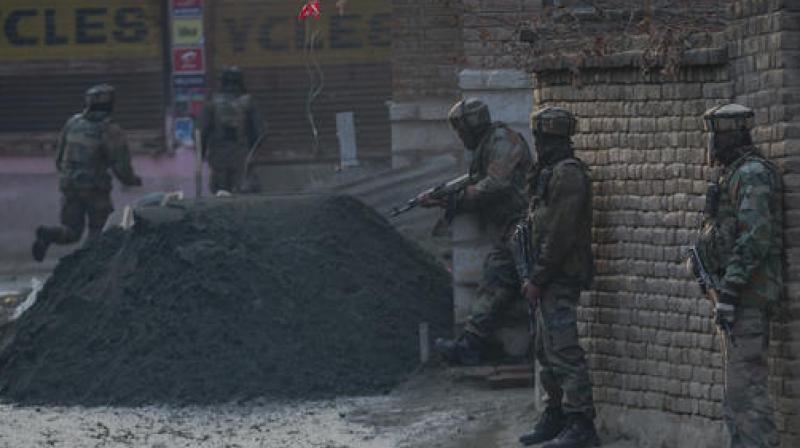Terrorists ambushed army convoy at Pampore despite intel warning: report

Pampore (J&K): Intelligence agencies had sent warnings of a ‘possible terror attack’ on Indian security forces 24 hours before a convoy of Rashtriya Rifles was ambushed near the Kadlibal area in Pampore town on Saturday afternoon.
According to a report in DNA, the intelligence input before the Pampore attack which killed 3 soldiers, had stated that banned outfits were planning a major stand-off with the Indian armed forces on the national highway. It even had specifics that there was a strong possibility that convoys would be targeted using Improvised Explosive Devices (IEDs).
At 12.30 pm on Friday, a message based on human intelligence was dispatched, warning security forces of an impending attack.
"Credible input suggests that militants have planned IED blasts followed by firing on NHW or a major town today (Friday). Take all necessary precautions," read a part of the warning.
Read: Militants open fire on Army convoy in J&K's Pampore, 3 soldiers killed
The report adds that senior officials of the Jammu and Kashmir police said that all precautions were being taken following the warning, but the terrorists ambushed at 2 pm on Saturday before the area could be secured.
The elaborate ambush plans, starting from planting IEDs, surprise attacks on convoys and a well thought-out escape route have now got security agencies thinking, said the report.
Areas in city outskirts like Pampore in south Kashmir is considered more vulnerable to such attacks, said the report. Entrepreneur Development Institute (EDI), which is located in the area, had also come under attack earlier.
The area is strategic for militant activities as it is located between areas like Kakapora, Ratnipora and Khrew. Open vast fields on the other side of the river provide good escape routes.
"The presence of militants in Pulwama and in areas close to the banks of Jhelum river is the reason that the highway has witnessed so many attacks," a senior police official was quoted as saying.
This year alone, seven major attacks have occurred on the Srinagar-Jammu highway, mainly in south Kashmir.
Meanwhile, in the wake of terror attack, security of the forces during their movement on Srinagar-Jammu national highway was on Sunday reviewed at a high level meeting chaired by state police chief K Rajendra Kumar who pressed for devising foolproof mechanism.
The Director General of Police later held a meeting with Srinagar-based Corps Commander Lt Gen J S Sandhu and discussed implementation of different decisions with regard to strengthening and augmentation of security setup across Kashmir Valley.
At the meeting with officials of police, army and paramilitary forces, Kumar emphasised the need for greater coordination and cooperation among the various forces and agencies.
The meeting was held at District Police office in Awantipora in south Kashmir, some kilometres away from Pampore where terrorists struck at an army convoy yesterday, killing three soldiers.
Addressing the meeting, the Director General of Police asked the officers to devise a foolproof plan for the national highway for safe and secure movement of the people and the security forces, a police spokesman said.
Kumar asked the army to strengthen the corridor protection and asked the CRPF to finetune the Road Opening Parties (RoPs) along the highway.
While highlighting the need of tackling the militancy effectively, the DGP said surgical operations with minimum collateral damages should be conducted.
In their respective briefs, the officers gave details of the security arrangements made by their organisations for the highway, the spokesman said.
Earlier, Kashmir Zone Inspector General of Police S J M Gillani briefed the meeting about the security situation of south Kashmir and also highlighted recent operations conducted against the militants, he said.
South Kashmir has recently witnessed a number of terror attacks, including two bank robberies.
The DGP told the meeting about the measures taken by the police to investigate and solve the bank robberies.

